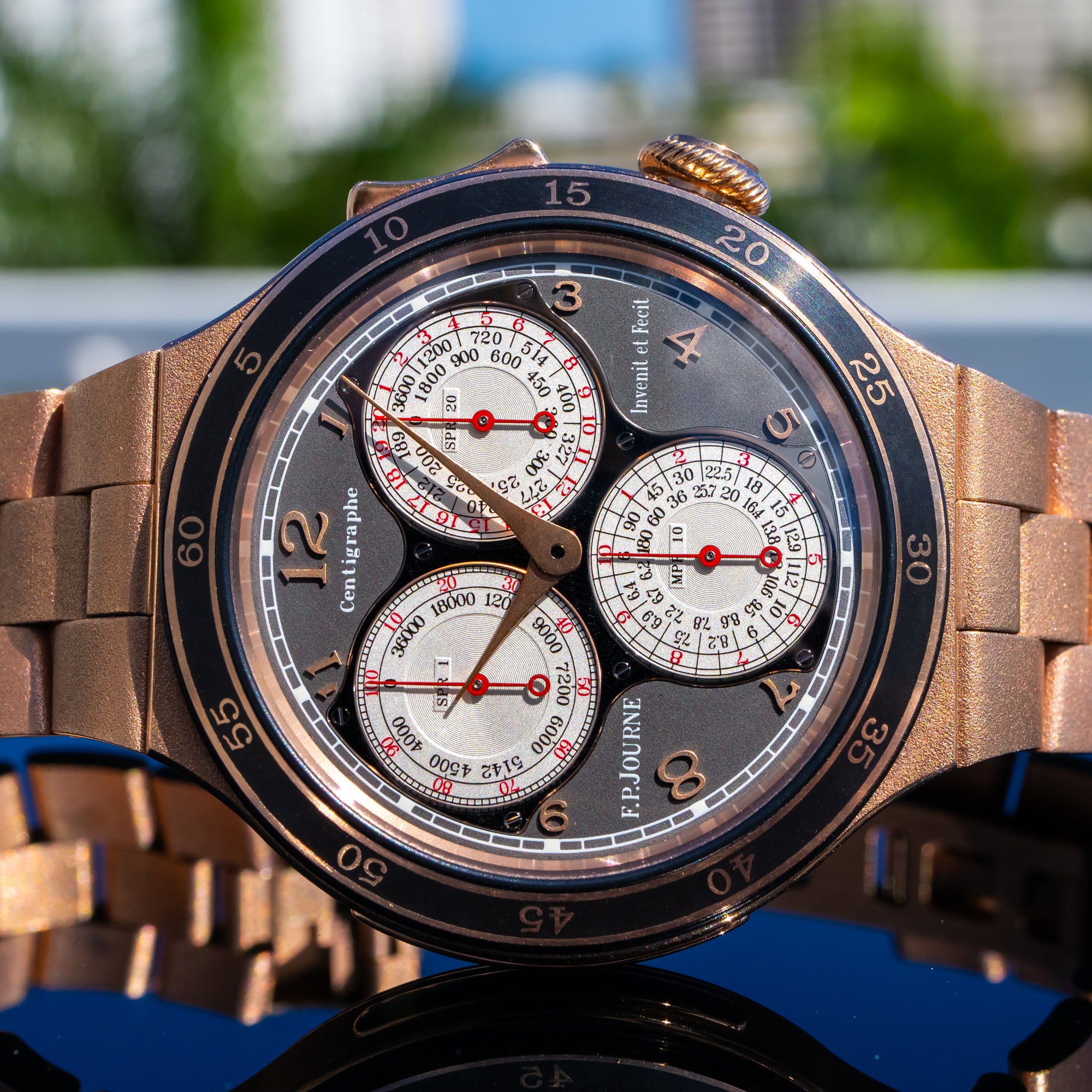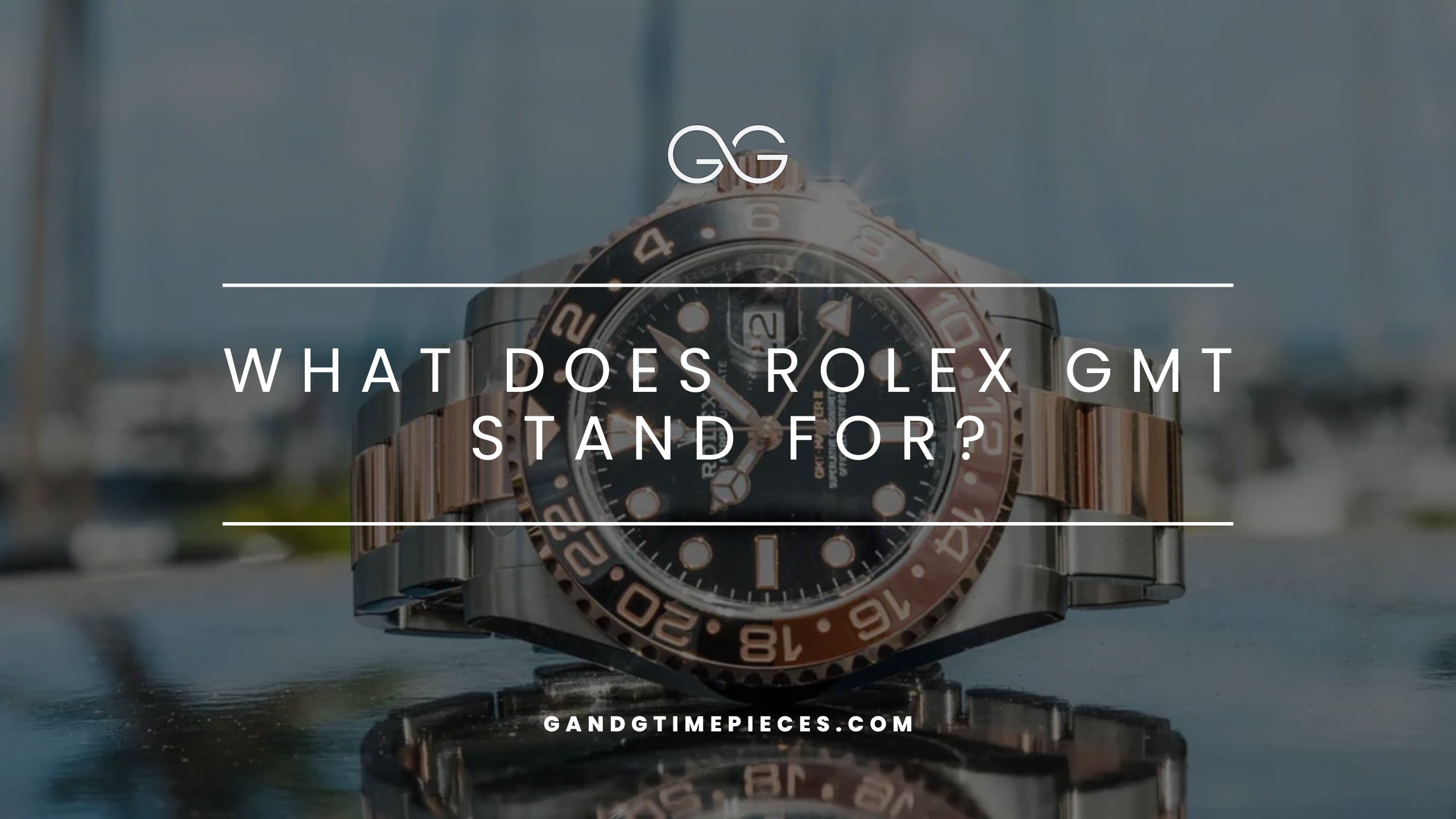Yes, Tudor is made by Rolex. Established by Rolex’s founder Hans Wilsdorf in 1926, Tudor was created to offer the same reliability and quality as Rolex, but at a more accessible price point. In this article, we will explore the origins, ownership, and relationship between the two brands, so you can better understand what makes Tudor a unique name in the watchmaking world.
Key Takeaways
-
Tudor was founded by Rolex’s Hans Wilsdorf in 1926 to provide quality watches at a more affordable price, democratizing luxury timepieces.
-
While both Tudor and Rolex are owned by the Hans Wilsdorf Foundation, they operate independently with distinct identities, targeting different market segments.
-
Tudor differentiates itself through adventurous designs and in-house movements, while Rolex remains synonymous with timeless luxury and superior craftsmanship.
The Origins of Tudor and Rolex
The story of Tudor and Rolex created begins with a visionary named Rolex’s founder, Hans Wilsdorf. Back in 1926, Wilsdorf founded Tudor as a way to create a brand that would offer the same reliability and quality as Rolex but at a more accessible price point.
The idea was to democratize luxury, allowing a broader audience to experience the pleasure of owning a luxury timepieces.
Hans Wilsdorf's Vision
Hans Wilsdorf’s vision was both simple and revolutionary. He aimed to blend the quality and reliability of Rolex with affordability, making luxury watches accessible to a wider audience. Wilsdorf achieved this by incorporating key elements from Rolex, such as the Oyster case and self-winding rotor movement, into Tudor watches. Tudor maintained lower pricing by using generic movements and sourcing components from Rolex without sacrificing quality.
This strategic approach allowed Tudor to complement the prestige of the Rolex brand while catering to a different market segment. It was a brilliant move that set the stage for Tudor’s enduring success in the watch world.
Early Years of Tudor
In its early years, Tudor leveraged Rolex’s reputation and facilities to build its own identity. The brand used Rolex’s patented Oyster case in its marketing, signaling quality to potential buyers. Despite these early connections, Tudor and Rolex maintained distinct production facilities, ensuring that each brand could develop its unique identity.
Initially, Tudor was often seen as the “poor man’s Rolex” due to its more affordable pricing. However, this perception began to change significantly after a global relaunch in 2009, which repositioned Tudor within the luxury watch market.
Today, Tudor is respected for its robust and stylish offerings, shedding its earlier associations and standing proudly as a brand in its own right.
Ownership and Relationship Between Tudor and Rolex
The ownership and relationship between Tudor and Rolex are as fascinating as their origins. Although both brands are owned by Rolex, they operate as separate entities, each with its own identity and market positioning, with Tudor being Rolex’s sister company.
This separation allows them to serve different demographics effectively without directly competing with each other.
Shared Ownership under Hans Wilsdorf Foundation
Both Tudor and Rolex are owned by the Hans Wilsdorf Foundation, a charitable organization established to support the legacy and values of these iconic brands. This shared ownership ensures that both brands maintain consistent standards of quality and craftsmanship. The foundation’s oversight allows Tudor and Rolex to operate independently while upholding the principles set forth by Hans Wilsdorf himself.
This arrangement not only preserves the heritage of two brands but also fosters an environment where each can thrive and innovate within their respective niches.
Separate Production Facilities
While Tudor and Rolex share ownership, they maintain distinct production facilities, enhancing their individuality in the luxury watch market. Each brand develops unique manufacturing processes and watch designs, catering effectively to different market segments.
Operating independently allows Tudor and Rolex to innovate and grow without diluting their brand identities. This operational independence is crucial for maintaining their distinct positions within the luxury watch industry.
Movements Used in Tudor Watches
One of the most intriguing aspects of Tudor watches is their evolution in terms of movements. Initially, Tudor relied on third-party movements, particularly from ETA, to maintain affordability while ensuring reliability. This approach allowed Tudor to offer quality timepieces at a lower price point, shaping its identity as an accessible luxury brand.
Early Use of Third-Party Movements
Before 2015, Tudor relied heavily on movements from external suppliers like ETA. These third-party movements enabled Tudor to keep costs down while still delivering reliable and high-quality watches. The use of generic movements, combined with Rolex-manufactured case components, allowed Tudor to maintain a balance between quality and affordability, particularly with the precision of Rolex movements.
This strategy was instrumental in establishing Tudor’s reputation as a brand that offered accessible luxury without compromising on functionality and reliability.
Introduction of In-House Movements
A significant shift occurred in 2015 when Tudor introduced its first in-house movement, the Cal. MT5621. This marked a new era for Tudor, enhancing its credibility and technical capabilities within the watch industry. The transition to in-house movements and in house calibers allowed Tudor to have greater control over quality and precision, which in turn elevated the brand’s status.
Today, Tudor’s in house movements are a testament to the brand’s commitment to innovation and excellence, further distinguishing it from its early reliance on third-party suppliers.
Design and Aesthetics: Tudor vs. Rolex
When it comes to design and vintage aesthetics, Tudor and Rolex each have their own distinct philosophies. Tudor is known for its adventurous and experimental designs, often incorporating innovative materials and bold aesthetics.
In contrast, Rolex is celebrated for its timeless elegance and classic appeal, making it a symbol of luxury and prestige.
Tudor's Experimental Approach
Tudor watches are characterized by their adventurous and experimental approach to design. The brand frequently uses unique materials such as bronze and fabric straps, which set its Tudor watch apart from more traditional designs. This innovative spirit appeals to collectors and enthusiasts who appreciate robust, stylish tudor timepieces that stand out.
Tudor’s willingness to experiment with design elements has earned it a loyal following among those seeking something different in the luxury watch market, including the Tudor Oyster Prince, montres tudor, and the Tudor Pelagos, which are both celebrated by the Tudor watch company.
Rolex's Timeless Elegance
Rolex, on the other hand, is synonymous with timeless elegance and classic aesthetics. The brand’s design philosophy focuses on creating watches that are not only luxurious but also suitable for formal occasions. Rolex watches are renowned for their high craftsmanship, precision, and adherence to traditional design elements.
This commitment to maintaining a prestigious image reinforces Rolex’s reputation as a leader in the luxury watch industry, appealing to those who value sophistication and enduring style.
Comparing Iconic Models
Comparing some of their most iconic models and vintage models highlights the differences between Tudor and Rolex.
The Tudor Black Bay and the Rolex Submariner are perfect examples of how each brand interprets the diving watch.
Tudor Black Bay vs. Rolex Submariner
The Tudor Black Bay is known for its playful design, featuring a larger case and vintage-inspired details. In contrast, the Rolex Submariner maintains a more classic and serious appearance, with a design that has remained largely unchanged since its inception. The Black Bay Fifty-Eight, introduced in 2018, exemplifies Tudor’s commitment to blending modern elements with retro aesthetics.
While both models are excellent diving watches, the Tudor Black Bay offers a more accessible price point and modern design, whereas the Rolex Submariner is a symbol of timeless luxury and technical excellence.
Tudor Ranger vs. Rolex Explorer
The Tudor Ranger and Rolex Explorer are both designed for rugged adventures but offer distinct experiences. The Tudor Ranger, introduced in the 1960s, draws inspiration from vintage watch tools and offers a choice of straps, adding versatility to its rugged design. Meanwhile, the Rolex Explorer, which debuted in 1953, is known for its fixed Oyster bracelet and classic aesthetic.
These differences highlight how each brand caters to different aspects of the adventure watch market, with Tudor focusing on versatility and Rolex emphasizing timeless durability.
Pricing and Market Positioning
Pricing and market positioning are critical aspects where Tudor and Rolex diverge significantly. Rolex is known for its high-end pricing, often positioning its watches as symbols of exclusivity and luxury.
In contrast, Tudor offers high-quality watches as a more affordable alternative at a more modest price point, appealing to a broader audience.
Tudor's Accessible Luxury
Tudor is positioned as a more affordable luxury brand, offering fine timepieces that do not compromise on quality. The introduction of in-house movements has further enhanced Tudor’s appeal without significantly increasing prices. Tudor watches are typically priced within a few thousand dollars, making them accessible to those who prioritize function and reliability in luxury watches.
This strategy has allowed Tudor to attract a diverse customer base, including those who may find Rolex too expensive but still desire a high-quality, stylish watch.
Rolex's Premium Pricing
Rolex’s pricing strategy emphasizes exclusivity and luxury, making its watches some of the most sought-after and prestigious in the market. The high retail prices of Rolex models reflect their status as symbols of wealth and success, further solidifying the brand’s position at the top of the luxury watch industry.
This premium pricing strategy ensures that Rolex remains synonymous with luxury watch brands and high status, appealing to those who are willing to invest in a watch that is both a timepiece and a statement of prestige.
Functionality and Durability
Both Tudor and Rolex have built reputations on the functionality and durability of their watches. Tudor, known for its robust build quality, has a heritage of producing reliable tool watches for military and professional use. Rolex and Tudor have both contributed significantly to this legacy.
Rolex, on the other hand, is celebrated for its superior craftsmanship and intricate finishing, making its watches both durable and luxurious.
Tudor's Robust Build Quality
Tudor watches are designed with practicality and durability in mind, a testament to their heritage as tool watches. Constructed primarily from 316L stainless steel, these watches are known for their strength and resistance to corrosion. This material choice, combined with Tudor’s function-first approach, ensures that their timepieces can withstand challenging environments and regular use.
This emphasis on robustness makes Tudor watches a reliable choice for those who need a durable and dependable watch. Whether you’re exploring the great outdoors or navigating the urban jungle, Tudor’s commitment to quality and functionality ensures that their watches can handle the rigors of everyday life.
Rolex's Superior Craftsmanship
Rolex watches are renowned for their superior craftsmanship and precision. The use of 904L stainless steel, known for its exceptional resistance to corrosion and scratches, sets Rolex apart from many other watch brands. This material, combined with Rolex’s meticulous attention to detail in movement and case design, ensures that their watches are both durable and luxurious.
The intricate finishing and high standards of quality control at Rolex contribute to the brand’s esteemed reputation within the luxury watch industry. Each Rolex watch is a testament to the brand’s dedication to excellence, making it a prized possession for those who value both performance and prestige.
Brand Identity and Community Perception
The brand identities of Tudor and Rolex are distinct yet intertwined, each appealing to different segments of the watch community. Rolex is synonymous with luxury and high status, while Tudor is seen as a more accessible option that still offers high-quality and stylish timepieces.
Tudor's Modern Identity
Tudor has successfully carved out a modern and innovative identity that sets it apart from its more established counterpart, Rolex. The brand is respected within the watch community for its unique design and quality, relative to its price point. Tudor is seen as cool, experimental, and independent, appealing to those who appreciate a blend of modern aesthetics and robust performance.
This identity has allowed Tudor to attract a diverse and loyal following, including younger watch enthusiasts who are looking for stylish and reliable timepieces that stand out from the crowd.
Rolex's Established Prestige
Rolex, on the other hand, has built its brand on a foundation of innovation, reliability, and luxury. The brand’s longstanding reputation is anchored in its history of creating high-quality, prestigious watches that are synonymous with wealth and success. Rolex’s strong emphasis on classic styling ensures that its watches remain timeless and suitable for any formal occasion.
This established prestige makes Rolex a benchmark for luxury watches, consistently associated with high craftsmanship and enduring value. For many, owning a Rolex is a symbol of achievement and status, reinforcing the brand’s position as a leader in the luxury watch industry.
Summary
In summary, the relationship between Tudor and Rolexis a fascinating blend of shared history and distinct identities. Hans Wilsdorf’s vision to democratize luxury with Tudor has resulted in a brand that offers high-quality, stylish timepieces at a more accessible price point. While Tudor has evolved from being seen as a “poor man’s Rolex” to a respected brand in its own right, Rolex continues to be synonymous with luxury and prestige.
Each brand caters to different segments of the market, with Tudor appealing to those who value innovation and affordability, and Rolex attracting those who seek timeless elegance and status. Together, they represent the pinnacle of the luxury watch industry, each with its own unique allure. Whether you prefer the adventurous spirit of Tudor or the classic sophistication of Rolex, both brands offer something truly special for watch enthusiasts.
Frequently Asked Questions
Is Tudor made by Rolex?
Absolutely, Tudor is owned by Rolex and has some shared elements, but it runs independently with its own unique identity and manufacturing.
What movements do Tudor watches use?
Tudor watches primarily used third-party movements from ETA in the past but have shifted towards developing their own in-house movements since 2015. It’s great to see brands evolving like that!
How do Tudor and Rolex differ in design and aesthetics?
Tudor often embraces adventurous and experimental designs with unique materials, while Rolex sticks to timeless elegance and classic aesthetics. So, if you're looking for bold innovation, go for Tudor; for classic sophistication, Rolex is your pick.
Are Tudor watches considered luxury watches?
Absolutely, Tudor watches are seen as luxury timepieces, providing premium quality and style at more affordable prices than their Rolex counterparts.
What are some iconic models from Tudor and Rolex?
You're looking at the Tudor Black Bay and the Rolex Submariner as iconic choices, alongside the Tudor Ranger and Rolex Explorer. Each of these models has its own unique appeal and features!





